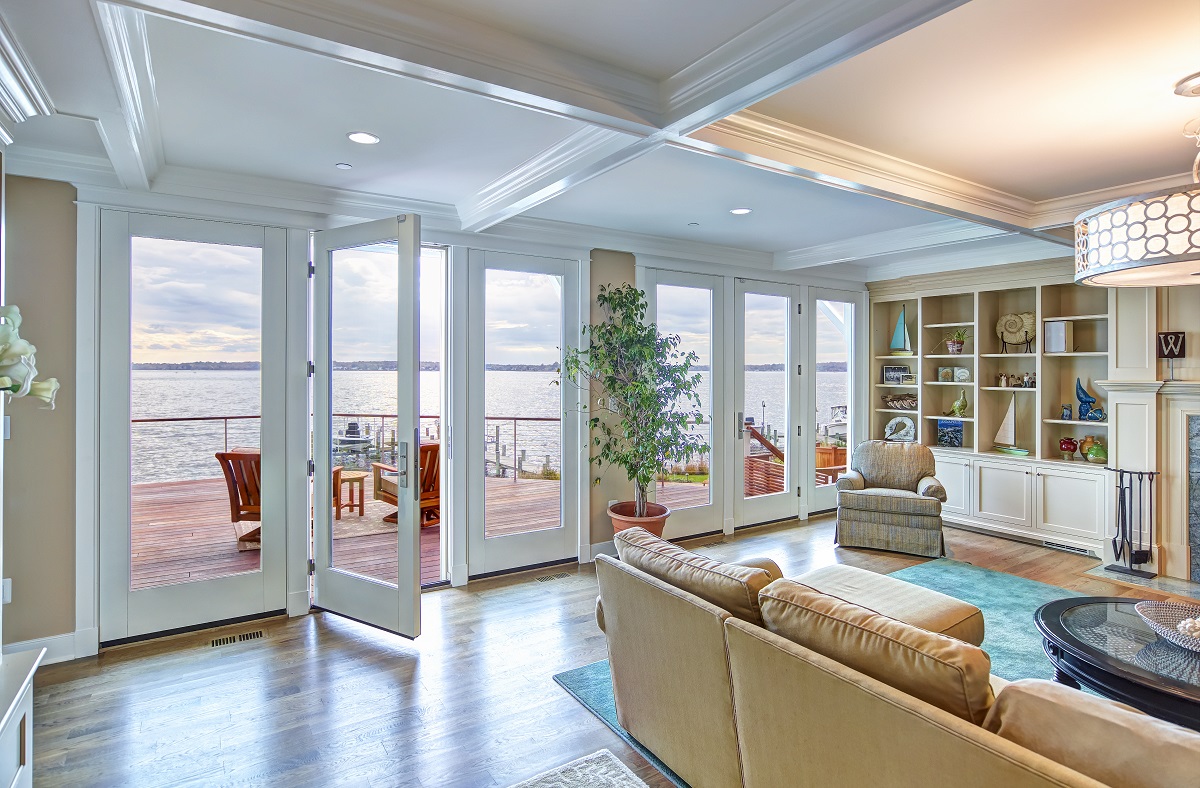
Photo Courtesy of Weather Shield Windows & Doors and Linetec
Sunshine, ocean breezes and beautiful coastlines are ingredients of my favorite destinations and memorable views. Expansive windows and doors are a prominent part of a shoreside home’s exterior.
Selecting a high-quality, high-performance finish on windows and doors in coastal environments is essential to preserving the intended appearance and to protecting the framing material from unsympathetic surroundings.
Here are six considerations for selecting a finish for aluminum windows and doors when a home is near the coast:
1. Proximity
Everchanging variables of a home’s climate make it difficult to predict the day-to-day conditions of a coastal area. The closer you are to the ocean, the greater the concentration of salt in the air.
Salt spray and deposits are among the main drivers of corrosion on exterior aluminum. This is because of salt’s chemical constituent chloride. It is not only beach-side homes that suffer from salt exposure. Salt from seawater is sent airborne by breaking waves and picked up by the wind. Significant airborne depositions of chloride from ocean spray have been found more than 50 miles away from the coastal shore.
2. Fabrication
The shape and machining of a window or door’s frame can affect how it responds to salt spray. Seams, hems, and cut holes and ends are potentially vulnerable. For best results, remember to machine, bend and shape the metal before it is finished.
Be aware of concave components that can collect water, or insufficiently sized or blocked weepholes. If it holds moisture and prevents drainage, it also can prolong exposure to salinized solutions and may speed up corrosion.
3. Paint Coatings
To ensure longstanding durability in coastal climates, select 70 percent PVDF resin-based architectural coatings for aluminum to meet the Fenestration and Glazing Industry Alliance’s AAMA 2605 specification standard.
The testing of these PVDF coatings includes more than 4,000 hours of accelerated exposure to salt spray. For real-time analysis, painted panels on a test site in South Florida are monitored for adhesion, chalking, color fading and gloss loss under actual coastal conditions for years, even decades.
4. Anodize Coatings
An extremely hard finish, Class I anodize coatings meet FGIA’s AAMA 611 specification providing another benchmark for finished aluminum. Anodized aluminum that meets this standard is subjected to 3,000 hours of accelerated exposure to salt spray.
5. Maintenance
Regular cleaning helps remove accumulated deposits from salt spray. If your product is finished with a 70 percent PVDF coating or a Class I anodize, it should only require a rinse with clean water, or at most, a rub with a soft cloth and mild soap solution.
Avoid the use of strong alkaline or acidic cleaners and abrasive metal scrapers. These can damage the finish and expose the underlying aluminum to future salt-spray. When a finish is compromised, the negative affects to the metal substrate may become significant within weeks.
6. Finishing Partner
Finally, remember to choose an experienced finishing partner who can ensure that your finish meets the required specification for coastal conditions as supported with a long-term warranty.
